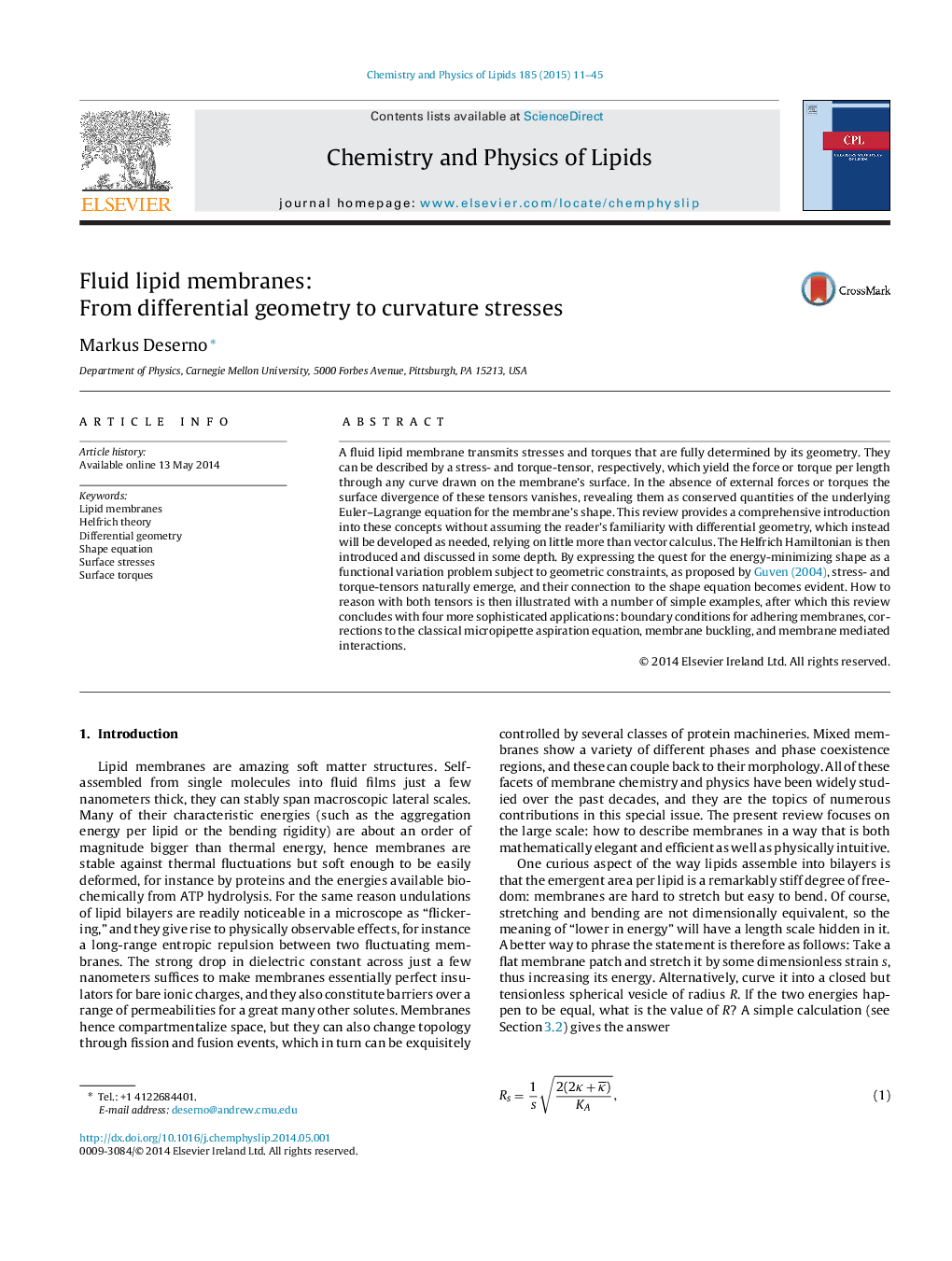| Article ID | Journal | Published Year | Pages | File Type |
|---|---|---|---|---|
| 1253296 | Chemistry and Physics of Lipids | 2015 | 35 Pages |
•Lipid membranes can be described by a curvature elastic Hamiltonian.•Its covariant differential geometric description is extensively reviewed.•A variation under geometric constraints reveals conserved stresses and torques.•Examples are provided for how to efficiently calculate with these objects.
A fluid lipid membrane transmits stresses and torques that are fully determined by its geometry. They can be described by a stress- and torque-tensor, respectively, which yield the force or torque per length through any curve drawn on the membrane's surface. In the absence of external forces or torques the surface divergence of these tensors vanishes, revealing them as conserved quantities of the underlying Euler–Lagrange equation for the membrane's shape. This review provides a comprehensive introduction into these concepts without assuming the reader's familiarity with differential geometry, which instead will be developed as needed, relying on little more than vector calculus. The Helfrich Hamiltonian is then introduced and discussed in some depth. By expressing the quest for the energy-minimizing shape as a functional variation problem subject to geometric constraints, as proposed by Guven (2004), stress- and torque-tensors naturally emerge, and their connection to the shape equation becomes evident. How to reason with both tensors is then illustrated with a number of simple examples, after which this review concludes with four more sophisticated applications: boundary conditions for adhering membranes, corrections to the classical micropipette aspiration equation, membrane buckling, and membrane mediated interactions.
Graphical abstractFigure optionsDownload full-size imageDownload as PowerPoint slide
